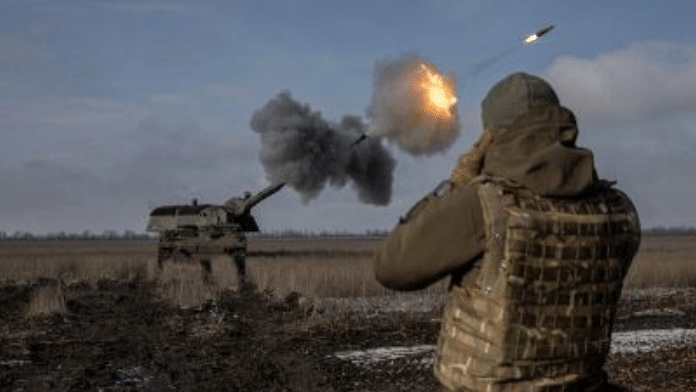Once the politico-military aims of a war have been clearly spelt out, the next step is to analyse the means to achieve them as part of the End-Ways-Means continuum. At the level of grand strategy, there are two major ways to achieve the political and military aims—through a ‘Strategy of Attrition’ or a ‘Strategy of Annihilation’.
Deciding which to adopt requires a detailed appreciation of all factors, including terrain, the adversary’s strength and dispositions, and other geo-political considerations.
Annihilation vs attrition
The strategy of annihilation is a military approach where an attacking army aims to completely destroy the military capacity of the opposing force. This strategy often involves a single decisive battle—the battle of annihilation—during which tactical surprise, overwhelming force, or other strategic manoeuvres are employed. The ultimate goal is to render the opposing army incapable of further offensive or defensive military action, compelling its leaders to seek peace.
In ancient and classical times, battles often ended with the annihilation of one of the opposing forces. Notable examples include the battles of Cannae (216 BC), Zama (202 BC), and Adrianople (378 AD). However, from the Renaissance onward, this strategy fell out of favour in Europe, especially after the advent of the Nation State, post the Peace of Westphalia (1648). Nevertheless, Napoleon Bonaparte’s victories at Austerlitz (1805) and Jena (1806) are considered classic battles of annihilation. Despite adjustments by his enemies, Napoleon’s tactics left a lasting influence on military thought, underscoring the importance of achieving decisive results in battle.
The strategy of attrition, on the other hand, is a military approach aimed at wearing down the enemy to the point of collapse by inflicting continuous losses in personnel, materiel (equipment and supplies), and morale. It is defined by belligerent attempts to win a war by gradually eroding the opponent’s ability to continue fighting the war.
While attritional warfare includes various battle types (except decisive battles), it does not involve Blitzkrieg-type operations or the concentrated use of force for swift victory. The side that reinforces its army faster often prevails, leading to the exhaustion of the adversary. The side at a marked disadvantage may deliberately seek attrition warfare to neutralise the opponent’s advantages over time. When attritional methods sufficiently weaken the enemy, other strategies may complement or replace attrition.
World War 1 commanders relied ineffectively on attrition, resulting in casualties without significant strategic gains. The ongoing conflict in Ukraine has now entered the stage of attrition, with both sides trying to wear each other down to the point of exhaustion. This is even more evident from the fact that the broader US aim seems to be to weaken Russia by using Ukraine as its proxy.
The strategy of exhaustion
The strategy of exhaustion, an offshoot of the strategy of attrition, is a fascinating concept in the realm of warfare. Whereas the strategy of attrition aims to reduce an adversary’s physical capacity to fight, in the strategy of exhaustion, the focus shifts to wearing down the opponent’s will to fight. It’s about making the war seem endless or pointless, leading to a decline in the opponent’s resolve.
Often, these two strategies go hand in hand. Destroying an enemy’s material strength can also erode their will to continue the struggle. Vietnamese leader Ho Chi Minh used a strategy of exhaustion during the First Indochina War. He made the French occupation of Indochina too meaningless, ultimately leading to their fatigue and withdrawal following a decisive battle at Dien Bien Phu.
A strategy of exhaustion can take various forms. These include implementing blockades to isolate an adversary and disrupt their supply lines; laying sieges to isolate, encircle, and put pressure on a fortified location; inflicting attrition through hit-and-run tactics as in guerrilla warfare; and employing scorched earth policies to destroy the physical ground and the resources thereon that an attacker might use. China may well attempt to use blockading strategies in its endeavour to integrate Taiwan with the Chinese mainland, as a low-risk and low-cost option to achieve its political aim.
Also Read: Theaterisation isn’t duplicating units in all Services. ‘Satisficing’ has consequences in war
What would be the right strategy for India?
The choice of strategy will depend on the geo-strategic imperatives and physical topography of the region. However, it is essential to realise that both attrition and exhaustion can impose heavy burdens on a nation’s population and economy, making them culturally challenging and economically impractical at times. This is why nations generally prefer swift, sharp, and decisive campaigns to minimise the inevitable loss and suffering in war. However, should a decisive victory not materialise, the option to shift between strategies always exists—and would typically be the norm, especially if the war were to become long drawn out.
India, too, needs to factor in which of these strategies would be the most suitable in dealing with each of its potential adversaries. The strategy to be adopted would also depend on whether we are on the offensive or on the defensive with respect to each of our adversaries.
To elucidate, the terrain of our Northern borders favours a strategy of attrition while conducting a defensive campaign. But on the Western front, given the terrain and relative strength of the opposing forces, a strategy of annihilation might be a better option. This does not mean that we would be either on the defensive or offensive over the entire front, but only pertains to the overall strategy to be implemented. Whatever the strategy adopted, ultimately the aim is to win the war.
General Manoj Mukund Naravane PVSM AVSM SM VSM is a retired Indian Army General who served as the 28th Chief of the Army Staff. Views are personal.
(Edited by Asavari Singh)




Sirji
Great military theories . Which one are we following to get the Chinese out of Doklam and other occupied Indian territories? Or is it that the Chinese are following ‘attrition’ via a vis India?
Regards